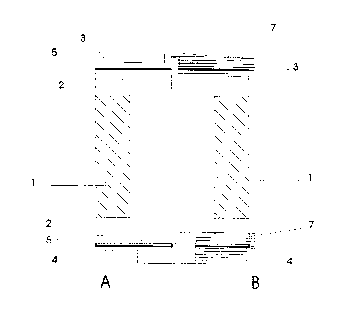Some of the information on this Web page has been provided by external sources. The Government of Canada is not responsible for the accuracy, reliability or currency of the information supplied by external sources. Users wishing to rely upon this information should consult directly with the source of the information. Content provided by external sources is not subject to official languages, privacy and accessibility requirements.
Any discrepancies in the text and image of the Claims and Abstract are due to differing posting times. Text of the Claims and Abstract are posted:
| (12) Patent Application: | (11) CA 2210565 |
|---|---|
| (54) English Title: | METHOD OF FORMING A FIBROUS FILTER ELEMENT |
| (54) French Title: | PROCEDE DE FABRICATION D'UN ELEMENT FILTRANT FIBREUX |
| Status: | Deemed Abandoned and Beyond the Period of Reinstatement - Pending Response to Notice of Disregarded Communication |
| (51) International Patent Classification (IPC): |
|
|---|---|
| (72) Inventors : |
|
| (73) Owners : |
|
| (71) Applicants : |
|
| (74) Agent: | OSLER, HOSKIN & HARCOURT LLP |
| (74) Associate agent: | |
| (45) Issued: | |
| (86) PCT Filing Date: | 1996-02-09 |
| (87) Open to Public Inspection: | 1996-08-15 |
| Examination requested: | 2003-01-31 |
| Availability of licence: | N/A |
| Dedicated to the Public: | N/A |
| (25) Language of filing: | English |
| Patent Cooperation Treaty (PCT): | Yes |
|---|---|
| (86) PCT Filing Number: | PCT/GB1996/000275 |
| (87) International Publication Number: | GB1996000275 |
| (85) National Entry: | 1997-07-16 |
| (30) Application Priority Data: | ||||||
|---|---|---|---|---|---|---|
|
In a fibrous filter element in which there are a bundle of fibres having woven edges supported around an inner support such as a cylinder and attached between two end supports the woven edges of the bundle of fibres are encapsulated with the end support with an encapsulating resin, this avoids the packing density of the fibres at the end of the element being reduced compared to that at the centre of the element and makes for easier handling and manufacture.
L'invention concerne un élément filtrant fibreux comportant un faisceau de fibres à bords tissés maintenu autour d'un support intérieur, tel qu'un cylindre, et fixé entre deux supports d'extrémité, les bords tissés du faisceau de fibres étant enrobés avec le support terminal avec une résine d'enrobage, ce qui permet d'éviter une réduction de la densité de compactage des fibres à l'extrémité de l'élément filtrant en comparaison de celle obtenue au centre de l'élément et ce qui en facilite la manipulation et la fabrication.
Note: Claims are shown in the official language in which they were submitted.
Note: Descriptions are shown in the official language in which they were submitted.

2024-08-01:As part of the Next Generation Patents (NGP) transition, the Canadian Patents Database (CPD) now contains a more detailed Event History, which replicates the Event Log of our new back-office solution.
Please note that "Inactive:" events refers to events no longer in use in our new back-office solution.
For a clearer understanding of the status of the application/patent presented on this page, the site Disclaimer , as well as the definitions for Patent , Event History , Maintenance Fee and Payment History should be consulted.
| Description | Date |
|---|---|
| Inactive: Agents merged | 2013-10-24 |
| Inactive: IPC from MCD | 2006-03-12 |
| Inactive: IPC from MCD | 2006-03-12 |
| Application Not Reinstated by Deadline | 2005-02-09 |
| Time Limit for Reversal Expired | 2005-02-09 |
| Deemed Abandoned - Failure to Respond to Maintenance Fee Notice | 2004-02-09 |
| Letter Sent | 2003-02-25 |
| Request for Examination Received | 2003-01-31 |
| All Requirements for Examination Determined Compliant | 2003-01-31 |
| Request for Examination Requirements Determined Compliant | 2003-01-31 |
| Inactive: First IPC assigned | 1997-11-17 |
| Inactive: IPC assigned | 1997-11-17 |
| Inactive: Single transfer | 1997-11-10 |
| Classification Modified | 1997-10-22 |
| Inactive: Courtesy letter - Evidence | 1997-09-30 |
| Inactive: Notice - National entry - No RFE | 1997-09-25 |
| Inactive: Applicant deleted | 1997-09-24 |
| Application Received - PCT | 1997-09-24 |
| Application Published (Open to Public Inspection) | 1996-08-15 |
| Abandonment Date | Reason | Reinstatement Date |
|---|---|---|
| 2004-02-09 |
The last payment was received on 2003-01-31
Note : If the full payment has not been received on or before the date indicated, a further fee may be required which may be one of the following
Patent fees are adjusted on the 1st of January every year. The amounts above are the current amounts if received by December 31 of the current year.
Please refer to the CIPO
Patent Fees
web page to see all current fee amounts.
| Fee Type | Anniversary Year | Due Date | Paid Date |
|---|---|---|---|
| Basic national fee - standard | 1997-07-16 | ||
| Registration of a document | 1997-11-10 | ||
| MF (application, 2nd anniv.) - standard | 02 | 1998-02-09 | 1997-11-19 |
| MF (application, 3rd anniv.) - standard | 03 | 1999-02-09 | 1999-01-22 |
| MF (application, 4th anniv.) - standard | 04 | 2000-02-09 | 2000-02-08 |
| MF (application, 5th anniv.) - standard | 05 | 2001-02-09 | 2001-02-06 |
| MF (application, 6th anniv.) - standard | 06 | 2002-02-11 | 2002-01-24 |
| MF (application, 7th anniv.) - standard | 07 | 2003-02-10 | 2003-01-31 |
| Request for examination - standard | 2003-01-31 |
Note: Records showing the ownership history in alphabetical order.
| Current Owners on Record |
|---|
| KALSEP LIMITED |
| Past Owners on Record |
|---|
| RONALD CHARLES COSGROVE |